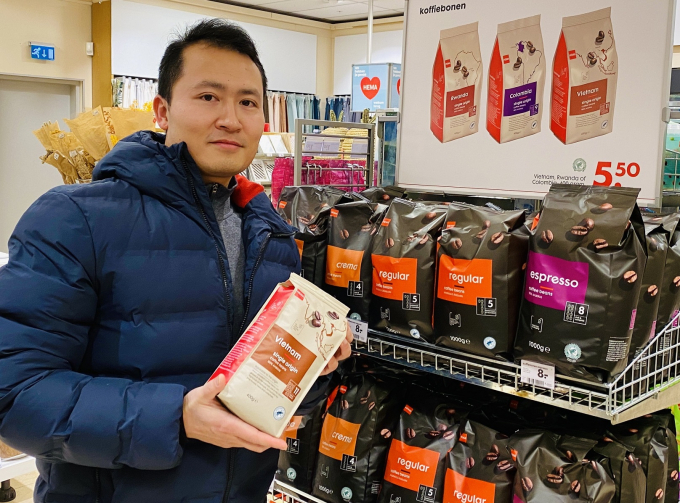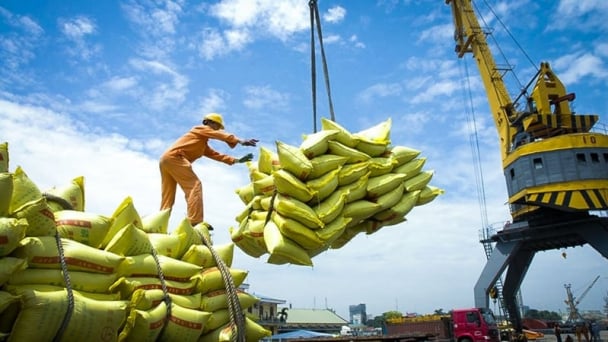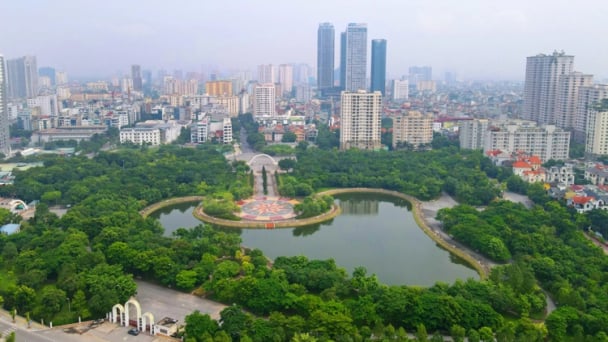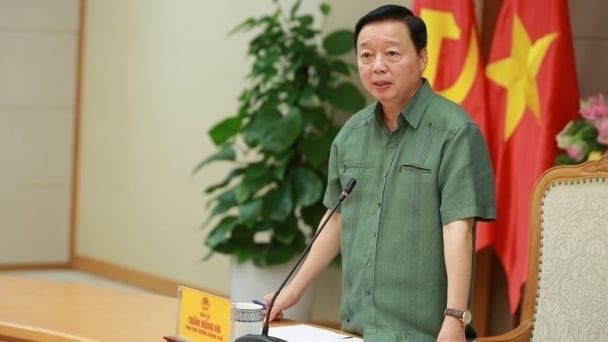May 22, 2025 | 08:26 GMT +7
May 22, 2025 | 08:26 GMT +7
Hotline: 0913.378.918
May 22, 2025 | 08:26 GMT +7
Hotline: 0913.378.918
Along with clearly defining general and specific goals in each stage, “the 2021 - 2030 Strategy for Sustainable Agricultural and Rural Development - vision to 2050” sets out nine orientations and ten important solutions to realize the goal of sustainable agricultural and rural development.

It is essential to actively make full use of opportunities gained from free trade agreements and develop official export.
The first orientation is to complete the agroproduction structure in association with competitive advantages and market requirements based on key product groups and each strategic production area.
The second orientation is to organize important stages in production to improve efficiency and ensure sustainable development. The main focuses include research, selection, breeding and transfer of varieties high in quality, yield and resistance, as well as conservation and development of indigenous varieties.
Infrastructure systems require completion for further agricultural development. Production and use of inputs must be well-managed, aiming towards responsible production, especially in terms of fertilizers and pesticides. The current situation calls for an increase in agricultural mechanization levels.
The third orientation includes building specialized farming areas to ensure sustainable standards; forming a number of industrial and service clusters to aid agroproduction; prioritizing the development of the processing industry, establishing concentrated raw material zones.
The fourth orientation refers to promoting cooperation, association, and development of the industry value chain; attracting leading enterprises to lead the value chain; associating with cooperatives and cooperative groups; developing advanced agricultural models such as ecological agriculture, organic agriculture, circular agriculture, emission-reduction agriculture, smart agriculture, high-tech agriculture, and experience-tourism agriculture (agritourism).
The fifth orientation includes developing rural economy to create jobs and increase incomes for rural people; investing in the development of service zones and clusters in rural areas and attracting enterprises towards rural investment; formalizing informal labor in rural areas; forming forces of professional farmers step by step.
The sixth orientation is to build a civilized and modern countryside associated with urbanization; preserve traditional cultures; upgrade and modernize rural infrastructure; innovate to improve implementation efficiency of the New Rural Development Program, suitable for each region.
The seventh orientation refers to inclusive development and assurance for equity and social welfare in rural areas. Rural people are the main subject of development. They must be guaranteed equal access to resources and social services, having the ability to proactively prevent risks, natural disasters and epidemics.
The eighth orientation includes building a strong community as the core of rural development and agroproduction; strengthening good-natured cultural traditions and community ties (villages, clans, families, etc.); actively promoting resources and the spirit of self-reliance, pride, solidarity and mutual development; promoting the role of local community organizations; shaping community development teams at all levels in a methodical manner.
The ninth orientation is to protect the ecological environment and landscape; develop rural landscapes associated with ecological villages; guarantee a clean, green and nature-friendly environment; reduce pressure and regenerate basic resources; proactively adapt to climate change.
The most important solution is to disseminate information and promote education to renew thinking and unify awareness and action for target groups about the role of “agriculture - countryside - farmer” in the new period, development orientations of rural agriculture in the world (responsible agriculture, ecological agriculture, organic agriculture, circular agriculture, etc.), and changes in the world consumption demand.
The organization of production and business must be reformed. Developing policies to support farmers to access markets, capital, machinery and advanced technology become necessary. Innovating policies to promote the development of cooperatives and cooperative groups are now important actors in production, consumption, and service support. The current situation is in need of policies that attract businesses to invest in agriculture, form a commodity ecosystem, and support start-ups.
Developing high-quality human resources calls for quality improvement in vocational training through renovating the organizational form and the quality of vocational training for young farmers and rural workers. Training support works must be in line with business demands.
There should be an increase in public investment regarding research, application and transfer of science and technology. Synchronous funding for leading institutes and academies needs to be among the top priorities. And the key goal of investment in scientific research should associate with the transfer and application of new and advanced technologies.
The next group of solutions aims to perfect the legal environment for the science and technology market; ensure intellectual property rights; develop intermediary organizations for technology connection (exchanges, trading centers, innovation support centers); improve the efficiency of agricultural extension and technology transfer.
The strategy also offers solutions to develop domestic and foreign markets to ensure stable output for agricultural products.
Regarding the domestic market, it is necessary to renew the distribution system, infrastructure, link specialized production areas with consumption systems, and form a wholesale market system associated with logistics production chains in key regions.
As for the export market, it is essential to actively make full use of opportunities gained from free trade agreements and develop official export; decentralize authority and improve the capacity of industry associations; build a supply and demand information system to improve analysis and forecasting capacity.
It is also important to improve the capacity, effectiveness and efficiency of state management; renew industry management; reform institutions and administrative procedures.
Translated by Samuel Pham

(VAN) The draft amendment to the Circular on rice export trading stipulates a periodic reporting regime for rice exporting enterprises.

(VAN) Dong Thap farmers attained an average profit margin of 64% during the summer-autumn 2024 crop (first season), while An Giang and Kien Giang farmers followed with 56% and 54%, respectively.

(VAN) As a doctoral student doing research on renewable energy and electrification at Harvard University, the author shares his musings on electricity, nature, and countryside memories.

(VAN) The decree on Extended Producer Responsibility (EPR) ensures transparent management and disbursement of support funds, avoiding the creation of a “give-and-take” mechanism.

(VAN) Hue City rigorously enforces regulations regarding marine fishing and resource exploitation, with a particular emphasis on the monitoring of fishing vessels to prevent illegal, unreported, and unregulated (IUU) fishing.

(VAN) Hanoi People's Committee has issued a plan on reducing greenhouse gas emissions in the waste management sector with 2030 vision.

(VAN) Vietnam's draft amendment to Decree No. 156 proposes a mechanism for medicinal herb farming under forest canopies, linking economic development to population retention and the sustainable protection and development of forests.